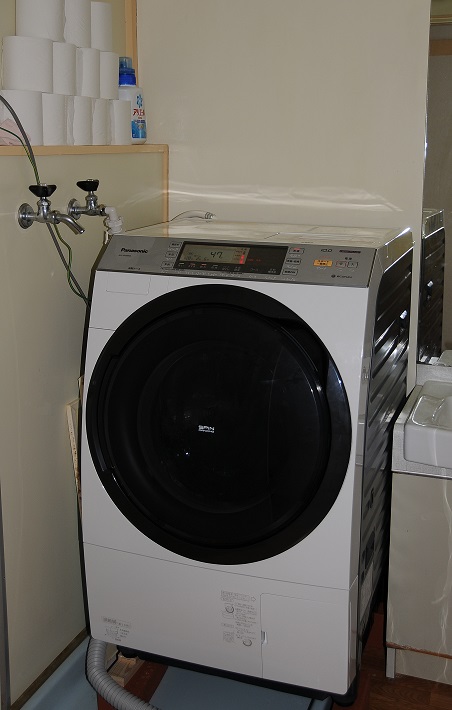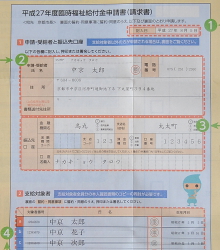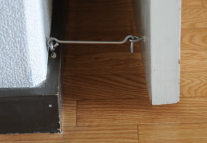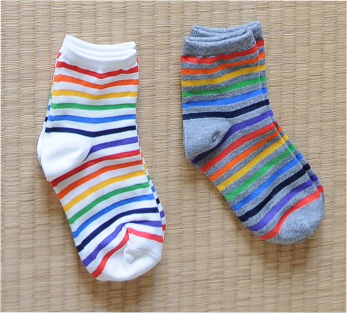To my greatest shame I have to confess: I caved in. I gave up. Five months of trying and working and seeking – and I just couldn’t go on any more. So, after a drama similar to the one with me getting internet, I finally went out last Friday – and bought a washing machine.
Oh. I probably should be explaining this in a bit more detail…
Altogether, I have been living in Asia now for six years. And all through this time I used local washing machines, often second-hand models. The standard Asian washing machine is a top loader machine, the main feature of which is that it is not capable of heating water like the European ones are. Meaning: it uses whatever temperature the water has as it comes from the tap, whether it be luke warm 25 degrees in summer or almost freezing 10 degrees in winter.
Six years with those machines made me hate them, hate them thoroughly. First of all, I have the impression that top loaders treat the laundry much more roughly than necessary – many of my t-shirts now have at least one tiny hole somewhere. Second, it seems to me that they are not washing as cleanly as possible – clearly, cold water does not clean as well as hot one, no matter how much detergent you are using. And third, they use way too much water for my taste.
So, when I moved to my new apartment in February, with the intention of staying in Japan for good, I decided that I would treat myself to a decent European washing machine, a beautiful front loader with a variety of programs with hot water up to 90 degrees Celsius. It may be more expensive than the standard I thought, but as a good machine will last for 10 years and more, this is not an issue. And thus began my journey…
Firstly, I went to Yodobashi Camera. When I bought the fridge and the gas range, I already checked the aisle with the washing machines and I was not happy with what I saw: Most of the machines were top loaders, and the few front loaders they had could not heat water either. “No point in buying these” I thought and moved on.
Secondly, I contacted a German friend of mine who has been living in Tokyo for more than 30 years. She said she was using a local model, but she could track down an *insert German top brand here* shop in Tokyo where they would sell the German machines I wanted. I took a trip to Tokyo and together with my friend we visited the store. The experience was rather … disillusioning.
The cheapest model they had cost 300.000 YEN. Then they wanted 100.000 YEN for delivery and installation. And then they estimated 250.000 YEN on top of that for remodeling my bathroom. This was needed because their machines run on 230 V and Japan has only 100 V, so the electric wiring would need to be strengthened, and possibly the floor too. I declined. I mean, I don’t mind expensive, but I do mind extortion. Hence, no advertisement for them here…
Thirdly, I let the whole thing slip for a while. With my visa and the company I had enough decisions to make. Only in the beginning of this month I picked up the loose ends again – all the while lugging my dirty underwear to the nearest laundromat. I found out that Panasonic (remember, that’s a Japanese company) manufactures beautiful European style washing machines, and they sell them everywhere all over the planet – just not in Japan.
I went so far as to coerce a friend of mine to call Panasonic and ask if they would sell those machines in Japan, or if it was possible to import them from any place where they are sold, Hong Kong, Taiwan, Malaysia… for example. The man on the other end said, well, we don’t sell them here, and it’s not allowed to import them (as they are not certified for Japan). And even if there was a way to import those washing machines, he would not know, and even if he know, he was not allowed to tell us. Which left us with the two options that a) either he really did not know anything about importing those things, or b) he did, but thought it better not to talk about that on a company phone. Unfortunately, we’ll never find out…
Fourthly, my visa arrived, and I figured that with all my stuff still in Germany awaiting shipment, I could just as easily add a German washing machine to all the boxes. It would have cost me only 150.000 YEN, with 150.000 YEN for an independent workman to fix the bathroom, and free delivery and installation.
I had already contacted a white goods store near my shipping company, but then another friend of mine told me that she had tried to bring her old washing machine when she moved from Europe to Asia, and that she had to throw it away after all – and did I know that there was a different electric frequency in Asia? Well, I did not, and I since found out that Europe runs on 50 Hz electric frequency, and most of Asia on 60 Hz. Most of Asia, notice the big exception: Northern Japan, which also runs on 50 Hz. Unfortunately I have no plans moving to Tokyo…
Frantic phone calls and searches on- and offline ensued. The German manufacturer said it was better to buy their machine in Japan. The abovementioned shop in Tokyo said that they had the frequency problem all sorted out and it would not be an issue. We found frequency converters who would do the trick of changing the 100V/60Hz coming out of my socket to the 230V/50Hz the machine would require, but they are expensive (60.000 YEN and up), heavy (at least 20 kg), and hard to get.
In the end, I did not dare to import a machine where I could not have been absolutely sure that it would work here. Besides, I thought that while it would be fine for me to renovate the bathroom in my own house/apartment, there’s not much point in doing so in a rental one – and my landlord would not have paid a thing (understandably).
Fifthly, I finally went out last Friday to buy a washing machine. And lo and behold, I found a Panasonic front loader that is able to heat water (15, 40, 60 degrees), only one of two models currently out there. It is an enormous thing more than 1 m high and looks as if you could shoot it up to the IRS laden with supplies. It has 10 kg capacity – apparently the Japanese like to wash their futons at home – which means that I will probably need to wash only once a month; it’s good that it comes with a built-in dryer so I will not run out of clothing in the winter…
The whole thing came at a price of 225.000 YEN, plus 3.200 YEN delivery and installation – which was only that expensive because my building does not have an elevator – and costs for bathroom remodeling of 432 YEN. The reason for the latter is that my bathroom has a very flat tub installed in which the washing machine is usually placed. In case there is a leak, the water will be contained in the tub and drain away without flooding the whole bathroom. Unfortunately, the tub is very old and the machine is too wide to fit in – by about 10 mm.
My neighbour had the same problem and he said I could just buy bricks or wooden blocks on which to place the machine half inside and half outside of the tub, and you can see on the photo below that this is exactly what I did. The people installing the machine were not particularly happy, but by then I was not ready to give in any more, and in the end we managed. So far I have done two loads of laundry and I am, let’s say, not totally dissatisfied. However, every time I have to go to the bathroom now I get a little shock at the sight of that UFO taking up so much space in there…

 o finally received some quotes from one of the local accountants I have contacted, and as expected, they are much cheaper than the large company in Tokyo. Hopefully they are more flexible as well, for I will try to negotiate a bit more, as there are still things I don’t really need (according to my lawyer), so maybe there is a way around those too.
o finally received some quotes from one of the local accountants I have contacted, and as expected, they are much cheaper than the large company in Tokyo. Hopefully they are more flexible as well, for I will try to negotiate a bit more, as there are still things I don’t really need (according to my lawyer), so maybe there is a way around those too.







